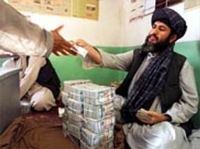Killing microfinance to say they saved the poor
Vivek Nemana is an NYU graduate student and a student worker at DRI. It’s official: Indian politicians have agreed to regulate the private microfinance sector…by choking it in a tangle of bureaucracy and corruption.
As everyone from David Roodman (on this blog) to the Cambridge randomistas (in the FT) has been saying, Indian microfinance needs reform, not a roundhouse kick to the face. But now the state of Andhra Pradesh has passed an overbearing law which makes it illegal for MFIs to lend to people with multiple loans (which is 70% of rural households), or to lend to members of Self Help Groups without permission. State regulators may also shut down MFIs at any time for vaguely defined “sufficient reasons,” and lenders can only collect payments at government centers – an open corridor for corruption.
The head of Microfinance Institutions Network said: "The bill will make it impossible for microlenders to operate in the state and effectively put us out of business there."
Private microlending in Andhra Pradesh was successful because there was excess demand for credit that government-backed programs and non-profits were not satisfying. But with the for-profits squeezed out, their six million clients will be forced to return to more informal lenders such as village loan sharks.
In 2009 a similar incident happened in Nicaragua with uncanny parallels to Andhra, right down to the multiple lending and political involvement. The “No Pago,” or No Payment, movement resulted in the judge-ordered liquidation of a top microlender and a dragged-out microcredit crisis.
India was like a Petri dish for microfinance experiments, which meant that initiatives like self-help groups, mobile banking, and MFIs played off each other’s shortfalls. Eventually, the competition between the agents – if mixed with a healthy dose of regulation – might’ve fostered better, more effective systems of microcredit.
But this legislation is a discouraging blow to would-be microfinance entrepreneurs, who’ve been basically told that at any time the government might decide to shut down their businesses – and their ideas.
Investors in for-profit ventures might also be frightened away by the idea of losing money when politicians decide to tighten their grip around microfinance’s throat. In a worst case scenario, the new law could legitimize similar actions by politicians in other countries who are pandering for votes or have their own personal beef with microfinance. Some countries, like Peru, already have stable, well-organized regulation in place, but they’re exceptions.
On the other hand, what happened in India could be a wake-up call, as Tim Ogden argues, about the unrealistic expectations that donors, supporters and governments maintain about microfinance. If that’s the case, then clear-headed thinking about its flaws and benefits could pave the way for better regulation, better financial literacy programs and more effective, more diverse microfinance products.
Next week, Indian politicians plan to ban all Bollywood movies for “sucking the blood from the poor” because they charge for movie tickets.
---------
Photo credit: flickr
 From Aid to Equality
From Aid to Equality






